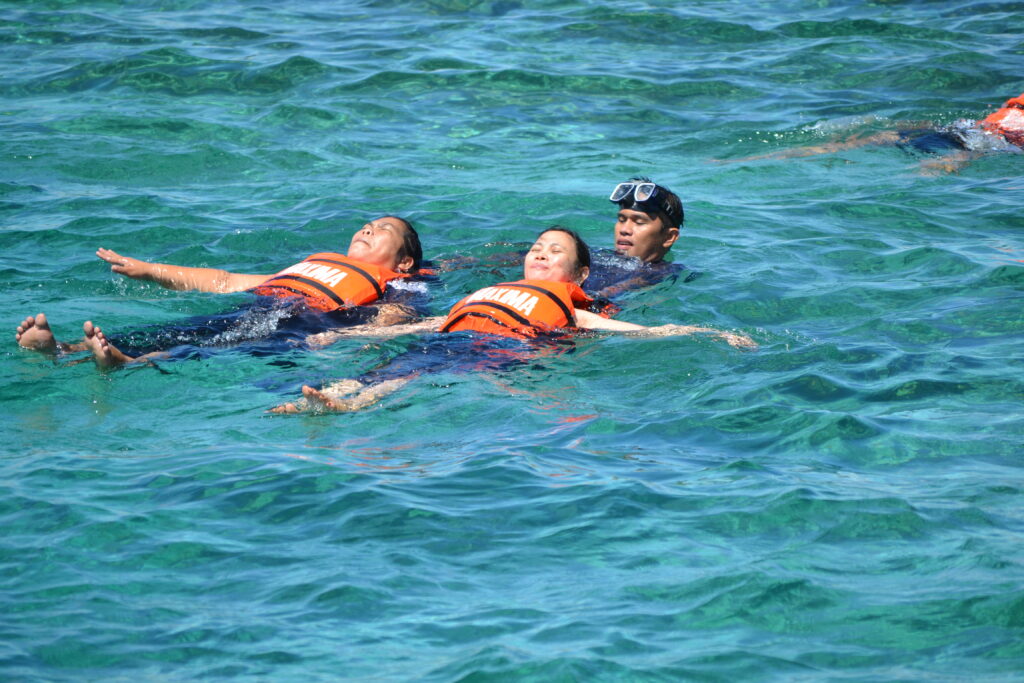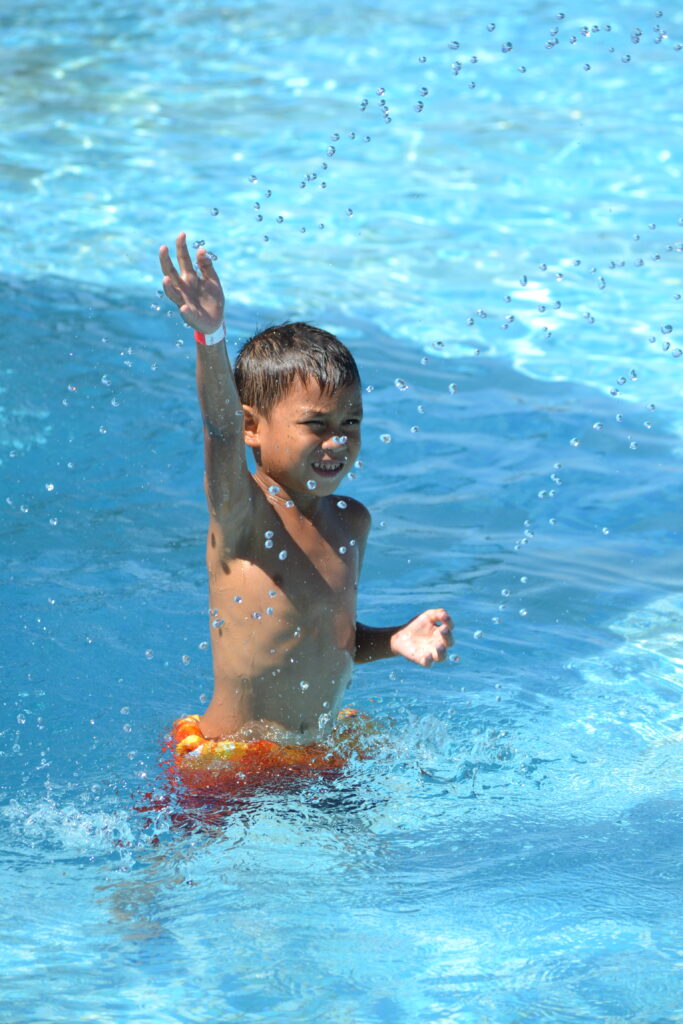Text and Photos by Henrylito D. Tacio
IT’S was a warm Sunday morning, and most of the families were out in Coaco Beach in Davao City. Five-year-old Jane was swimming along with other kids along the seashore. No adults were looking for them. Jane’s mother, Charlene, was busy preparing their food for lunch while the father, Jonathan, was buying soft drinks in the nearby store.
Suddenly, three consecutive big waves hit the kids. Jane was carried away into the deeper part, and before she knew it, she was already gasping and drinking a lot of water. The other kids could not help her since they, too, didn’t know how to swim. It was just a matter of a minute, and Jane went down to the water. It was at this moment that Aida, a neighbor who was also on the beach, came and immediately rescued Jane.
But it seemed it was already late. Jane was already pale and was not moving anymore. “Will somebody help us,” Aida shouted. Everyone who heard the shout came running. “What happened?” Charlene inquired, and when she saw it was her daughter, she was shocked.
Fortunately, Ferdinand, Aida’s son, and his friend, Renato, were around. Both had attended a first aid workshop a couple of weeks ago conducted by the Philippine National Red Cross. Sensing that Jane was no longer breathing, the two immediately did mouth-to-mouth resuscitation. First, it was Ferdinand who breathed into Jane’s mouth. Afterwards, Renato took over. Three minutes later, Jane vomited some water and started breathing again.
Charlene was crying and smiling when she saw her daughter had been brought back to life. They immediately brought her to the hospital. “Thank you very much,” she told Ferdinand and Renato. “You have saved the life of my daughter just on time.”
More often than not, people generally call the emergency hotline: 911. But “ambulances take too long to get to places where they are needed most because of horrendous traffic and other conditions they have to get through,” says Dr. Siang Hiong Goh, head of emergency medicine at the Changi General Hospital in Singapore.
In most parts of Asia, including the Philippines, the response time for emergency ambulance calls is between 10-20 minutes. That’s beyond the six-minute mark. Experts estimate that once the heart stops, there is a crucial window of four to six minutes to restore circulation.

Learning to float 
Beat the heat
“The universal final step to dying is when the heart stops to beat or pump so that circulation of blood and distribution of oxygen to every part of the body cease,” explains Dr. Roberto A. Raymundo, the chairman of the cardiopulmonary resuscitation (CPR) of the Philippine Heart Association. “Our cells in the body cannot survive without oxygen. Brain cells, in particular, begin to die in 4 to 6 minutes in the absence of oxygen supply.”
So, when a rescuer breathes air into the victim’s lungs, oxygen is provided into the blood. Or when a rescuer compresses on the chest, the oxygen-carrying blood is moved or circulated through the body of the victim.
Cardiopulmonary resuscitation
CPR is considered the cornerstone of emergency medicine. “When done properly, CPR can help preserve the brain and heart functions until the actual cause of the arrest can be addressed,” says Dr. Raymundo.
There are lots of reasons why someone’s breathing or heartbeat might stop – heart attack, stroke, drowning, electrocution, vehicular accidents, overdose, and many others.
According to Dr. Raymundo, many untimely deaths can be prevented if only bystanders know and can do CPR until the emergency response team in ambulances arrives. A warning, though: If you are not trained in CPR, do not attempt to resuscitate.
Experts share the following instructions you need to do in case of an emergency. Take note, however, that these are for use on unresponsive victims age eight and older.
1. Have someone call 911 or the number for Emergency Medical Services (EMS) in your area.
2. With the victim lying face-up, tilt the head back by lifting the chin up with one hand, pushing down on the forehead with the other hand, to open the airway.
3. Look, listen and feel for signs of normal breathing (chest rising and falling, breath on your face or ear) for about five seconds.
4. If the victim is not breathing, pinch the nostrils shut and give two slow full mouth-to-mouth breaths, making sure a good seal is formed and making sure you see the chest rise.
5. Check for normal breathing, moving, and coughing – signs of circulation.
6. If the victim begins regular breathing and regains consciousness, monitor until help comes. If he is breathing but unconscious, turn him onto his side and monitor until help arrives.
7. If the victim is still not breathing, moving, or coughing within 5 to 10 seconds, give 15 chest compressions at a steady rhythm of about 2 per second: Place the heel of one hand with the other atop it at the center of the breastbone directly between the nipples. Lock your elbows and align your shoulders directly above your hands. Push down just enough to move the breastbone about one and a half to two inches.
8. Repeat rescue breaths and chest compressions. After four cycles, check for signs of breathing and circulation.
9. Until circulation and breathing return or help arrives, continue compressions and rescue breaths at a ratio of 15 to 2. Check for signs of circulation and breathing every few minutes.
Drowning
Death by drowning is one of the most common causes among accidental deaths. Drowning doesn’t just happen on the beaches and rivers. You can drown in a wading pool – or even in a bathtub.
“A cry, a splash by the arms and legs, and a period of immersion when the drowning victim disappears from sight are all the signs that a person in the water may be drowning,” says Dr. Stephen J. Rosenberg, an American neurologist and expert in geriatric emergencies.
A word of advice: Never let a drowning person grab onto you in deep water. There’s a possibility that you will go under as well. So, if you’re out of shape, don’t even attempt to save a drowning person. Call for help instead.
“Rescue is only half the job,” says Dr. Rosenberg. “Reviving someone who has drowned or swallowed water is the other half, and it’s equally important when it comes to saving a life.”
Here’s what you need to do to revive someone who has drowned:
1. Call EMS.
2. Turn the victim’s head to the side, allowing any water to drain from the person’s mouth and nose.
3. Begin CPR on land. Strongly breathe four times into the mouth of the victim as you pinch the nose. This helps air get past any water that is clogging the breathing passageways and the lungs.
4. After four breaths, put your ear near the mouth and watch the chest for any breathing movement. Check the pulse for signs of life. Repeat the cycle.
5. Once the victim has regained consciousness and breathing again, keep him still and quiet while waiting for the medical help to arrive.
Prevention tips
Recent studies have shown that children drown in pools, spas, buckets, toilets, and bathtubs. A child can drown in as little as two inches of water and in less time than it takes to answer the telephone.
Here are some drowning prevention tips:
· There is no substitute for adequate supervision. Children need to be watched. Never leave children unattended in or around pools or spas – not even for a second.
· Access to the pool or spa area should be limited by locked doors, windows, and self-closing, self-latching gates on fences surrounding the pool. Latches should be above the reach of children.
· Do not allow children to play in pool areas. Keep toys out of the area.
· Keep rescue equipment such as a long-handled hook and a ring buoy with a rope hanging near the pool.
· Always keep chairs, tables, or toys away from the pool or spa fence to keep children from using them to climb over.
· Do not allow anyone of any age to swim alone. Drowning happens to adults too. When you are entertaining a group of children or adults, have a designated pool watcher who is responsible for keeping track of everyone. Examples of safe water behavior by adults are important for young children.

